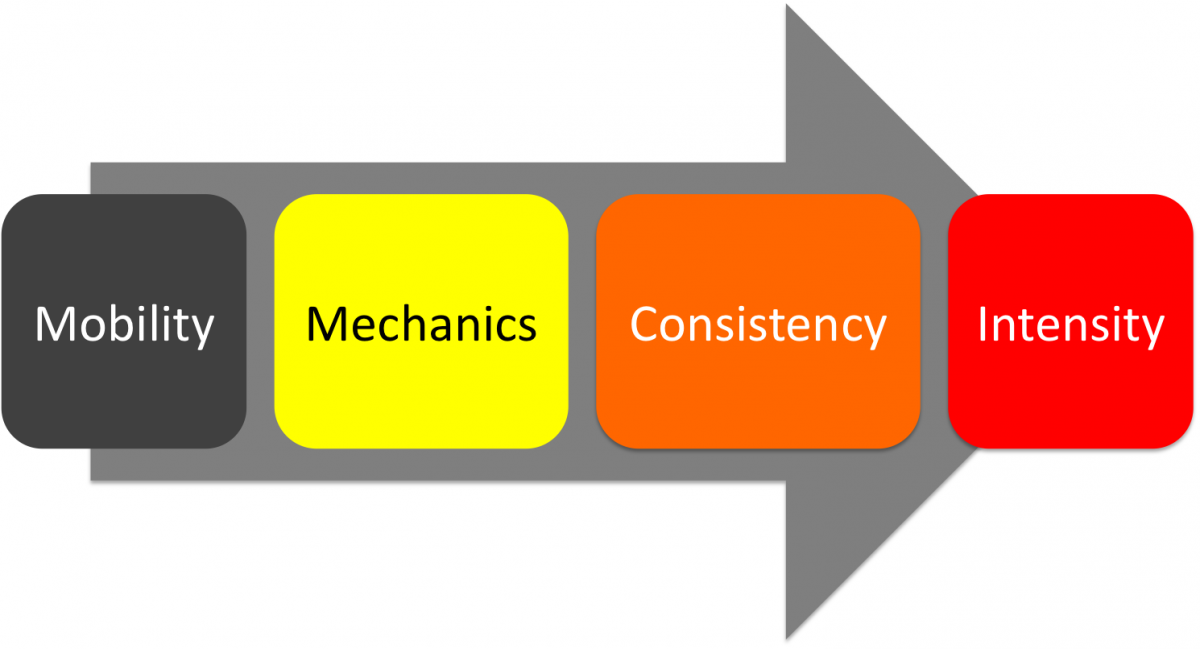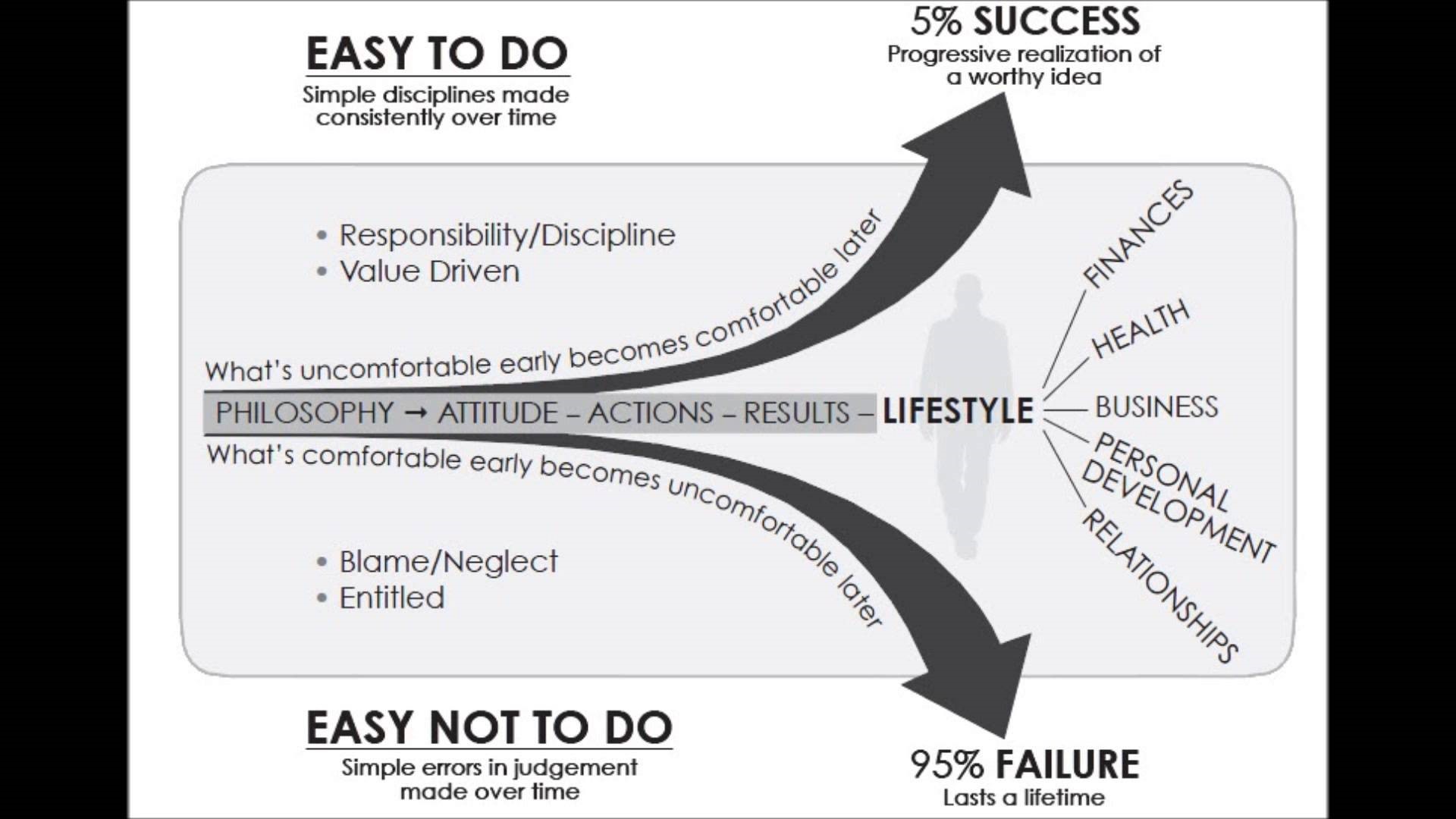In this series, I hope to take a Dan John-esque approach to training philosophy and overall methodology by putting out a few thoughts on different considerations that you should make as part of your training in a more holistic, long-term sense. These will likely not be immediately-applicable pearls of wisdom such as the other Coaches have provided so far. More accurately, it should be considered an attempt to provoke some thought about your own training choices, and to air a set of opinions in a buffet-style format for you to take what you want from.
Longevity in Training
There are many areas in which this has been forgotten, and numerous programmes that have pushed athletes beyond their breaking points in all manner of sports, but the following statement should be uttered as fact, as truth. Training is a marathon, not a sprint. Or at least it should be, even if you want to be an Olympic sprinter. For those individuals who will sacrifice their health, well-being, function and even their livelihoods for fame and glory, kudos to you. I applaud your dedication, even as I dispute your methods.
But for 99.9999% of the world’s population, fitness is merely a vehicle by which to extend, experience and enjoy life. It is maintaining the vessel in which we take our [INSERT-NUMBER-OF-YEARS-HERE]-long journey so it gives us as much function as we can and allows us to do as much as we choose to let ourselves be capable of. If you are not one of the 0.0001%, then this is for you.

Mechanics, Consistency, Intensity
The diagram to the left is a commonly discussed principle in CrossFit gyms, but it applies as accurately in any form of training. “First, we make sure we have the requisite mobility, the working range of motion in the joints to do what we need to do. Next, we master the mechanics, and make sure we are doing the movements well. Then we move to consistency; we make sure that we move as well when fatigued as we do when fresh. Finally, we add intensity. When movement is mechanically sound and consistent, we up the average power (force/time) with which we attack our exercising.”
Why is Consistency So Important?
That which we do consistently is where we trend. If we never master the mechanics of a lift, then when we attempt it we will be inconsistent. If we never take the necessary time to increase our mobility, our mechanics will never be as good as they could be. If we take the necessary time to master the mechanics and drill them until they are second nature, it will show in our consistency and preserve our health, protect us from injury and increase our ability to train well over a long time period. In life, this can be considered the effects of compound interest; in training, it means simply that your inputs determine your outputs. In either context, if you get 1% better each day then over time that very quickly grows to an exponential. If you get 1% worse, the opposite happens and you rapidly descend to the very bottom. So, one of the very best things you can do for your training pipeline is to be consistent.

But how does this Consistency apply to Longevity?
Because consistent, ego-less behaviour in the world of training will maximise our chances of staying healthy and avoiding injury, make sure we work to just slightly beyond our current capabilities and advance at a slow, but unstoppable pace. Steady progress can be either fast or slow depending on how recently you have started training (see Coach Craig’s post on conditioning for a good discussion of the differences between new, intermediate and advanced gym-goers) but if it is steady progress, it is positive progress. Not only is it positive, but it preserves the longevity of training. Moving up towards success, keeping a safe distance and a habit-based buffer from failure.
“Life begins at the end of your comfort zone”
Neale Donald Walsch.
To improve in training and in life, we need to take ourselves to the edge of our comfort zone, to our limits. Then we need to incrementally take steps to push ourselves beyond those limits so we expand them in a way that lasts. This is the principle of progressive overload in the world of strength training. But by doing this within a framework, consistently repeating the same lifts and programmes for a set period of time – long enough to allow them to take their effects – we can push our bodies in a safe manner whilst minimising any risks to ourselves. This is where the benefit of being overseen by a trained professional comes in; our 4 amazing Coaches, Coaches Craig, Dorrington, Fletch and Sale, are the tip of the iceberg when it comes to those you can seek out to assist you. This approach can even be taken alone, though it requires disciplined management of one’s own programme.
Systems Thinking
To maintain longevity in a training environment, you need to be systematic with your approach. You need to know your body well enough to recognise anything that is aggravated in the process of training and take the necessary steps immediately to scale down your training in a way as to allow that injury/niggle to heal. Your Personal Trainer can readily help you do this. By doing so, you are making the short-term sacrifice of reducing your training, and therefore your rate of progress up the Success curve in favour of the long-term reward of regaining the ability to train at 100% quicker, rather than risking descending even further from 100% as injuries propagate.
Applying systems, in this case referring to training programmes, can also allow a framework through which to monitor progress and build around a structure that has been empirically tested by numerous others in the past. As I believe Coaches Craig and Fletch have both alluded to previously, there is an absolute multitude of basic programme structures available on the web, so I do not plan to list them all here. But the point I wish to make today is, if you use one, give it sufficient time to test it fairly and properly (e.g. 3-month cycles) but, in doing so, notice if it is working for you or not and don’t be afraid to change it if it doesn’t suit your body or your goals. We can afford to be partisan with how we treat such training plans. Some of them won’t suit us! And some of them we may gel with instantly – these are the ones we will get good value from.

I Encompass, And I Eclipse
If you can keep your training vigorous but minimise risk and be safe, you stand the best chance of maintaining your longevity and reaching your goals. Injuries and setbacks will happen but it is in our best interests to make the time that we spend Out-of-Action as low as possible. There are still things we can work on while injured, such as mobility, that will benefit us in the long run and keep us on that upward trend. Set long-term goals that you wish to reach, and then set shorter-term, micro goals to help you work towards them. But don’t be upset and demotivated if a setback happens and you can’t obtain a certain goal in the timescale you set – adapt and overcome. I wanted to get a sub-20:00 Park Run (5K) time this year, but due to a knee injury, it seems very unlikely to happen. Oh well. That can be a goal for 2019 now. The fitness pie is big enough that, for now, I can eat a different slice. Run the marathon, not the sprint. Anything is possible if you apply both determination and foresight.
As I am awfully good at rambling and belabouring the same point multiple times over, to those of you who would prefer it, see below for a summary, list of key takeaways, TL;DR etc. etc.
- Training is a marathon, not a sprint. Pace yourself and win over the rest of your life.
- First mobility, then mechanics, followed by consistency and then finally intensity.
- That which we do consistently is where we trend. Are you on an upwards path or a downward spiral?
- Use progressive overload and systems thinking. Have a sounding board. Work steadily for improvements.
- Respect injuries when they happen. Give them their due attention, and recover quicker and faster.
- Don’t be afraid of change. Mix up your programme as often as you need to.
Adapt and overcome. Encompass and eclipse.
Be unbreakable,
Sam.
Author - Samuel Norton - Editor and CrossFit L1 Trainer. Writer at Journal of a Developing Man.

Like what you read? Want to know more?
If you have a question about anything Health & Fitness that you want to see answered in a future article, or even fancy treating your brain & body to a whole day with one of our brilliant Mentors. Please contact us – we will endeavour to get back to you within 24hrs!
Remember – It is never too late to bulletproof your future self.
